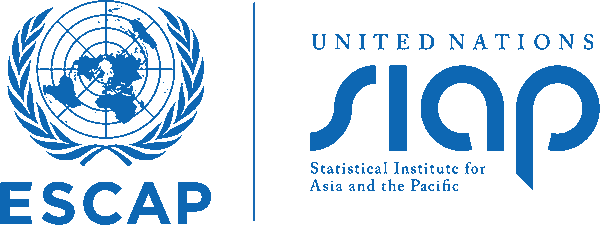
Training Course on Communication and Advocacy for Agricultural and Rural Statistics
In person

27 June to 01 July 2016
Daejeon , Republic of Korea
Overview
This training-of-trainers course is designed to contribute to the following expected outputs of the Asia-Pacific Regional Action Plan of the Global Strategy:
• Improve political support by decision-makers for agricultural and rural statistics in terms of provision of budget and resources and
• Enhance capacity of national statistical systems to advocate for adequate resources for developing and compiling country-specific minimum set of agricultural and rural statistics on a sustainable basis.
Objectives
This training-of-trainers course is designed to contribute to the following expected outputs of the Asia-Pacific Regional Action Plan of the Global Strategy:
• Improve political support by decision-makers for agricultural and rural statistics in terms of provision of budget and resources and
• Enhance capacity of national statistical systems to advocate for adequate resources for developing and compiling country-specific minimum set of agricultural and rural statistics on a sustainable basis.
| Reference Materials | ||
|---|---|---|
Module 1 - Understanding the demand for and use of agriculture and rural statistics | ||
| Session 1.1: | Role of Communication and Advocacy | |
| Session 1.2: | Using statistics throughout the policy cycle | |
| Session 1.3: | Identifying and describing users of statistics | |
| Session 1.4: | Identifying the skills needed to use statistics | |
Module 2: - Building Statistical Literacy in Agricultural and Rural Statistics | ||
| Session 2.1: | Connecting user needs and statistical capabilities | |
| Session 2.2: | Statistical illiteracy - the cost of being statistically illiterate on ARS | |
| Session 2.3: | The competencies required for statistical literacy | |
| Session 2.4: | Statistical literacy - How effective are data producers in building statistical literacy? | |
Module 3: - Devising an advocacy and communication strategy for ARS | ||
| Session 3.1: | Basics of the Policy Advocacy Process | |
| Session 3.2: | Advocacy and Communication Strategy Plan Framework: Overview | |
| Session 3.3: | Define the scope, opportunity and risks | |
| Session 3.4: | Defining your advocacy goal and objectives | |
| Session 3.5: | Identify target audiences | |
| Session 3.6: | Identify key messages: what do you want each audience to hear? | |
| Session 3.7: | Identify delivery channels: what forms of media will you use | |
| Session 3.8: | Branding: Decide on logos, visual identity and theme | |
| Session 3.9: | Roles and Responsibilities | |
| Session 3.10: | Monitoring and Evaluation | |
| Session 3.11: | Communications Action Plan | |
| Session 3.12: | Communications Strategy completion | |
| Session 4.1.Communication and Dissemination Workshops | ||
|---|---|---|
| Session 1 | Communications strategy template | |
| Session 2 | Generic Statistical Capability Framework | |
| Session 3 | Designing a face-to-face event | |
| Session | GSARS Asia Pacific Communications Strategy | |
| Session | Competitive and Sustainable Agriculture and Fisheries Sector | |
| Country papers | ||
|---|---|---|
| Bangladesh | ||
| Cambodia | ||
| Fiji | ||
| Indonesia | ||
| Lao People's Democratic | ||
| Maldives | ||
| Myanmar | ||
| Philippiens | ||
| Republic of Korea | ||
| Samoa | ||
| Sri Lanka | ||
| Thailand | ||
| Vietnam | ||
